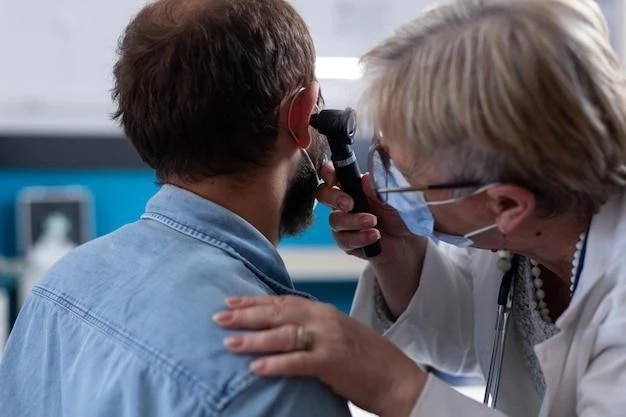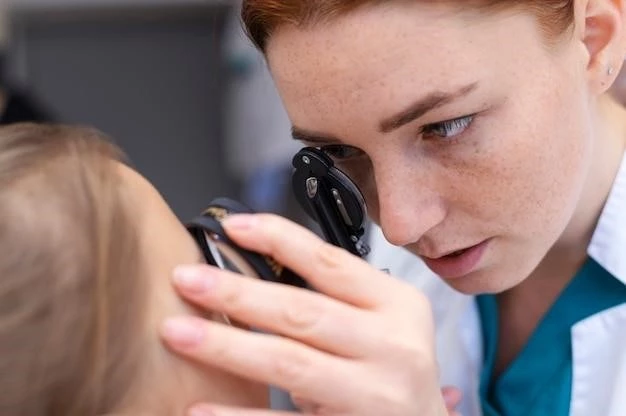Causes of Congenital Heart Septum Defect
The causes of congenital heart septum defect can be attributed to various factors․
Genetic Factors
Genetic factors play a significant role in the development of congenital heart septum defects․ Mutations or abnormalities in specific genes involved in heart development can lead to septal defects․ Family history of heart defects can also increase the risk of inheriting the condition․ Understanding the genetic basis of these defects is essential for early detection and management․
Environmental Factors
Environmental factors can also contribute to the development of congenital heart septum defects․ Exposure to substances such as alcohol, certain medications, or toxins during pregnancy can increase the risk․ Maternal health conditions, infections, and nutritional deficiencies are also environmental factors that may impact fetal heart development․ Understanding and avoiding these environmental influences is crucial in preventing heart septum defects․
Combination of Genetic and Environmental Factors
The interaction between genetic and environmental factors can significantly contribute to the occurrence of congenital heart septum defects․ In some cases, individuals may have a genetic predisposition to heart defects, which can be further influenced by exposure to environmental triggers during fetal development․ Studying the interplay of these factors is essential for a comprehensive understanding of the etiology of congenital heart septum defects․
Symptoms and Diagnosis of Congenital Heart Septum Defect
Recognizing the symptoms and accurately diagnosing congenital heart septum defects is vital․
Common Symptoms
Common symptoms of congenital heart septum defects may include shortness of breath, fatigue, inadequate growth, respiratory infections, and cyanosis․ These symptoms vary based on the type and severity of the defect․ Timely recognition and evaluation of these signs are crucial for prompt diagnosis and appropriate management․
Diagnostic Procedures
Diagnostic procedures for congenital heart septum defects may involve echocardiography, electrocardiogram (ECG), chest X-ray, cardiac catheterization, and MRI․ These tests help assess the structure and function of the heart, identify the type and severity of defects, and guide treatment decisions․ Early and accurate diagnosis is crucial in managing congenital heart septum defects effectively․
Imaging Techniques
Imaging techniques such as echocardiography, cardiac MRI, and CT scans play a crucial role in visualizing congenital heart septum defects․ These non-invasive methods provide detailed images of the heart’s structure, blood flow, and abnormalities․ By utilizing advanced imaging technologies, healthcare professionals can accurately diagnose, assess, and monitor patients with congenital heart septum defects for optimal treatment outcomes․
Treatment Options for Congenital Heart Septum Defect
Various treatment options are available to manage congenital heart septum defects effectively․
Medication
Medication may be prescribed to manage symptoms and complications of congenital heart septum defects․ Drugs such as diuretics, ACE inhibitors, and beta-blockers help reduce the workload on the heart and control blood pressure․ Anticoagulants may be used to prevent blood clots in some cases․ Proper medication management is essential in the comprehensive treatment approach for individuals with congenital heart septum defects․
Catheter Procedures
Catheter procedures offer minimally invasive options for repairing certain types of congenital heart septum defects․ Techniques like transcatheter closure can be used to repair atrial septal defects or patent foramen ovale without the need for open-heart surgery․ Catheter-based interventions provide effective treatment while reducing recovery time and complications associated with traditional surgical approaches․
Surgical Interventions
Surgical interventions are often necessary for complex congenital heart septum defects․ Procedures like ventricular septal defect repair, atrial septal defect repair, and patent foramen ovale closure may require open-heart surgery․ Skilled cardiac surgeons address structural abnormalities and ensure proper blood flow through the heart․ Surgical interventions aim to improve heart function and overall quality of life for individuals with congenital heart septum defects․

Surgical Procedures for Congenital Heart Septum Defect
Surgical procedures play a critical role in addressing congenital heart septum defects effectively․
Ventricular Septal Defect (VSD) Repair
Repairing ventricular septal defects is typically done through open-heart surgery․ Surgeons meticulously close the abnormal opening between the heart’s lower chambers to restore proper blood flow and prevent complications․ VSD repairs aim to improve heart function, reduce symptoms, and enhance the overall quality of life for individuals with this congenital defect․
Atrial Septal Defect (ASD) Repair
Repairing atrial septal defects often involves surgical closure to correct the abnormal opening between the heart’s upper chambers․ The procedure restores proper heart function and circulation, reducing the risk of complications like heart failure or arrhythmias․ ASD repairs aim to improve symptoms, promote better heart health, and enhance the quality of life for individuals with this congenital anomaly․
Patent Foramen Ovale (PFO) Closure
Closure of patent foramen ovale (PFO) is typically performed through percutaneous procedures, such as transcatheter closure․ By sealing the small opening between the heart’s upper chambers, PFO closure reduces the risk of paradoxical embolism and stroke․ This minimally invasive approach aims to prevent complications and improve overall cardiovascular health in individuals with patent foramen ovale․
Management and Care for Patients with Congenital Heart Septum Defect
Comprehensive care and management strategies are essential for individuals with congenital heart septum defects․
Post-Surgery Care
Post-surgery care for individuals with congenital heart septum defects involves monitoring recovery, managing pain, preventing infections, and promoting physical activity․ Follow-up appointments and cardiac rehabilitation programs are crucial for ensuring optimal healing and adapting to lifestyle changes after surgical interventions․ Comprehensive post-surgery care aims to support patients in their recovery journey and enhance long-term outcomes․
Lifestyle Recommendations
Lifestyle recommendations for individuals with congenital heart septum defects include maintaining a heart-healthy diet, engaging in regular physical activity, avoiding smoking, managing stress, and attending cardiac rehabilitation programs․ These lifestyle modifications aim to support overall cardiovascular health, reduce the risk of complications, and enhance the quality of life for individuals living with congenital heart septum defects․
Regular Follow-up Visits
Regular follow-up visits are essential for individuals with congenital heart septum defects to monitor heart function, assess progress, adjust treatment plans, and address any concerns․ Cardiologists and healthcare providers coordinate follow-up care to ensure optimal health outcomes, manage potential complications, and provide ongoing support for patients managing congenital heart septum defects․
